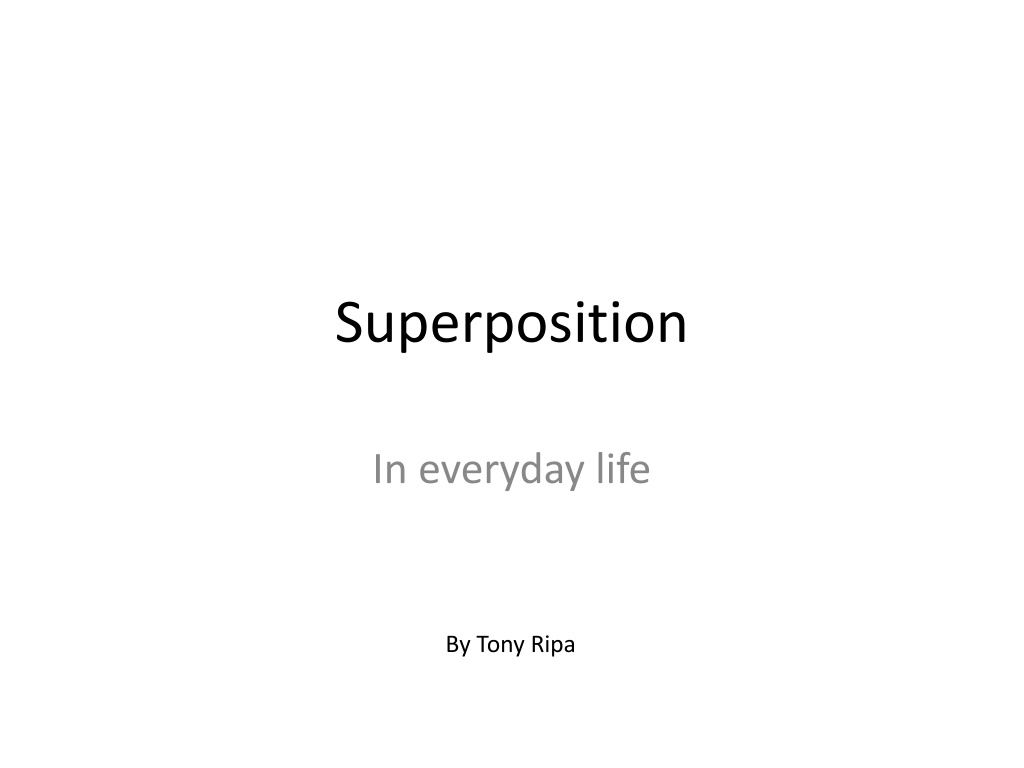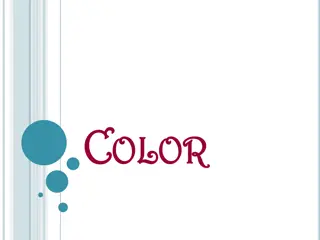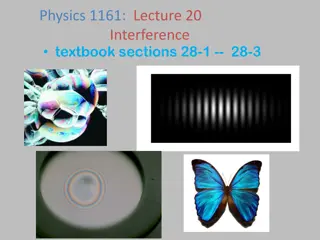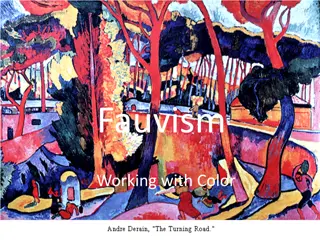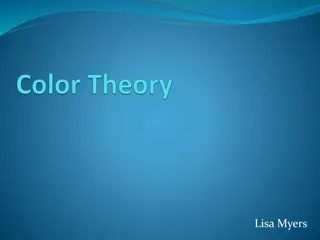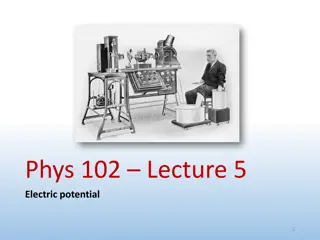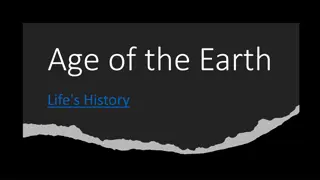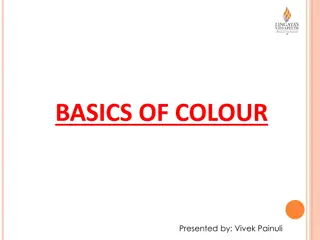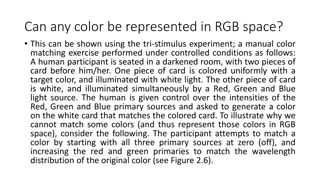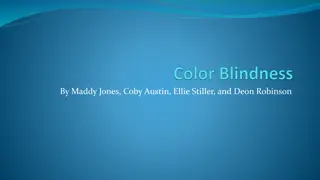Exploring Color Superposition in Everyday Life
Dive into a fascinating exploration of color superposition in everyday life through the lens of primary colors and their combinations. Learn how our understanding of colors can vary based on our perception and knowledge, leading to intriguing insights about the nature of color itself.
Download Presentation

Please find below an Image/Link to download the presentation.
The content on the website is provided AS IS for your information and personal use only. It may not be sold, licensed, or shared on other websites without obtaining consent from the author. Download presentation by click this link. If you encounter any issues during the download, it is possible that the publisher has removed the file from their server.
E N D
Presentation Transcript
Superposition In everyday life By Tony Ripa
Crayons Imagine you live in a world where all you know about color is your 3 crayons: Red, Green, and Blue.
Apple Imagine you are asked: what color is this apple? You can easily answer: it is red. Because for you the question is well- posed.
Drawing Apple If asked to draw the apple, you know just what to do. Because the apple is in a pure state (an eigenstate) of color.
Grapes If asked: What color are these grapes? You say: I don t know. It s like some odd combination of Red and Blue or something. This is because for you, Purple is a Superposition of Red and Blue.
Drawing Grapes If asked to draw grapes you have a bit of trouble. You end up trying to mash the blue and red together in an attempt to make this new and exotic grapish color. You come to think that the world is made of different combinations of your 3 primary colors. Sometimes you think the colors are pure. Usually you think they are some combination.
Post Hoc Ergo Propter Hoc The fact that you can always make Purple out of Red and Blue doesn t mean that Purple s existence is contingent on there being Red and Blue around to construct it. Purple is only a secondary color for you as long as you need to believe RGB (Red, Green, and Blue) are primary colors.
Someone Else You meet someone else. He lives in a world where all he knows about color is his 3 colored pencils: Magenta, Cyan, and Yellow.
Grapes In hopes of having some fun and asking him a trick question you say: What color are these grapes? He easily answers: it is Magenta. You thought he would struggle between saying Red and Blue but he didn t. This is because for him the question is well-posed. This is because the grapes are in a pure state (an Eigenstate) of color for him.
His Drawing Grapes You ask him to draw the grapes. He pulls out this pencil that is somehow already a combination of red and blue. He easily draws the grapes.
Apple You ask him what color is this apple? He says: I don t know. It s like some odd combination of Magenta and Yellow or something. This is because for him, Red is a Superposition of Magenta and Yellow.
His Drawing Apple You ask him to draw the apple and he has a bit of trouble. He ends up trying to mash the magenta and yellow together in an attempt to produce this new and exotic applish color. He comes to think that the world is made of different combinations of his 3 primary colors. Sometimes he thinks the colors are pure. Usually he thinks they are some combination.
Post Hoc Ergo Propter Hoc The fact that he can always make Red out of Magenta and Yellow doesn t mean that Red s existence is contingent on there being Magenta and Yellow around to construct it. Red is only a secondary color for him as long as he needs to believe CMY (Cyan, Magenta, and Yellow) are primary colors.
Uncertainty Principle Eigenstate in one system Yields Superposition in the other
Objects Themselves The objects themselves have no kind of ontological uncertainty. They are just there as they are. It is only when we try to categorize their color that we run into problems of how to label these things. Furthermore RGB (Red,Green,Blue) and CMY (Cyan, Magenta, Yellow) are just 2 different ways of talking about the same thing: color.
Localized Particles Let s say you live in a world where all you know about particles is localized particles. If I ask you to describe this particle you easily answer by telling me its position. Because for you the question is well- posed.
Harmonics I can ask you to describe this particle. You say. I don t know. It s like some weird combination of multiple places.
Drawing Harmonics If asked to draw harmonics you have a bit of trouble. You end up trying to draw multiple positions together in an attempt to make this new and exotic harmonic particle. You come to think that the world is made of different combinations of your localized particles. Sometimes you think the particles are pure. Usually you think they are some combination.
Post Hoc Ergo Propter Hoc The fact that you can always make Harmonics out of Localized Particles doesn t mean that Harmonic s existence is contingent on there being Localized Particles around to construct it. Harmonics are only a secondary character for you as long as you need to believe localized particles are primary.
Someone Else You meet someone else. He lives in a world where all he knows about particles is their wavenumber.
Someone Else In hopes of having some fun and tricking him you say: Describe this particle. He easily answers: The Wavenumber is 3. You thought he would struggle between saying here and there but he didn t. This is because for him the question is well-posed. This is because the particle is in a pure state (an Eigenstate) of Wavenumber for him.
Localized Particle You ask him to describe this particle. He says: I don t know. It s like some odd combination of different Wavenumbers or something. This is because for him, Localized Particles are a Superposition of Wavenumbers.
His drawing of Localized Particles You ask him to draw the previous particle and he has a bit of trouble. He ends up trying to mash different wavenumbers together in an attempt to produce this new and exotic Localized Particle. He comes to think that the world is made of different combinations of his harmonics (wavenumbers). Sometimes he thinks the wavenumbers are pure. Usually he thinks they are some combination.
Post Hoc Ergo Propter Hoc The fact that he can always make Localized Particles out of Harmonics doesn t mean that Localized Particle s existence is contingent on there being Harmonics around to construct it. Localized Particles are only secondary for him as long as he needs to believe Harmonics are primary.
Uncertainty Principle Eigenstate in one system Yields Superposition in the other
Objects Themselves The objects themselves have no kind of ontological uncertainty. They are just there as they are. It is only when we try to categorize their locality that we run into problems of how to label these things. Furthermore Position and Wavenumber are just 2 different ways of talking about the same thing: Momentum.
My Fall 2012 CSE 387 Research My Formula ?= 1 ? ?| =< ?| >? n=1 yields Probability Measure 1= 1 ? ?| =< ?| >1 n=2 yields the Born Rule 2= 1 ? ?| =< ?| >2
